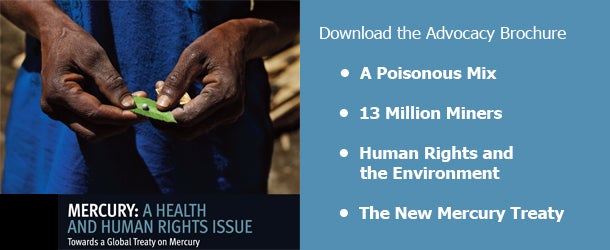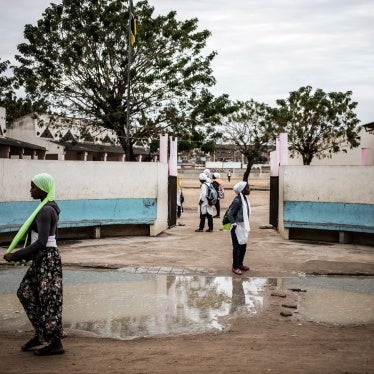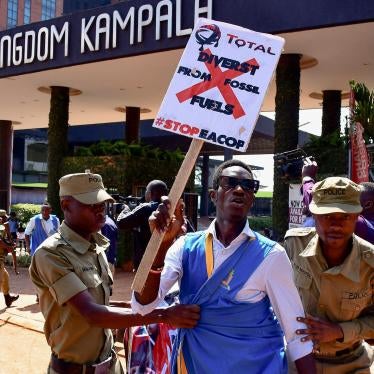(Nairobi) – Governments around the world should protect the health of millions of artisanal gold miners working with mercury, Human Rights Watch said today. Human Rights Watch submitted recommendations to governments ahead of negotiations for an international, legally binding convention on mercury.
Artisanal mining– often described as the “poor man’s way of mining”– takes place in about 70 countries around the world, with workers using labor-intensive, low-tech methods. Miners use mercury to extract gold from the ore, as it is cheap and easy to use. But mercury is a highly toxic substance that attacks the central nervous system and is particularly harmful to children. High levels of exposure can affect the development of their brain, kidneys, and digestive system, and cause developmental delays, according to medical experts. Artisanal miners are exposed to mercury when they mix mercury and ore with their bare hands, and worse, burn the amalgam to separate out the gold, inhaling the vapor.
“The efforts to reduce mercury in artisanal gold mining are important, but a strong public health approach for artisanal mining communities is missing from the debate,” said Juliane Kippenberg, senior children’s rights researcher at Human Rights Watch. “The treaty should not only address mercury as a technical environmental issue, but also as a right-to-health issue.”
Negotiations will take place in Nairobi, Kenya, from October 31 through November 4, 2011, at the third session of the Intergovernmental Negotiating Committee, under the leadership of the United Nations Environment Program (UNEP).
Mining is among the world’s most hazardous work. Yet about one million children work in artisanal gold mining in Asia, Latin America, and Africa, according to the International Labour Organization. Some start working at the age of six. Human Rights Watch has documented children’s exposure to mercury in Papua New Guinea, Mali, and Nigeria.
An 11-year-old girl in Mali told Human Rights Watch:
Once the ore is panned, you put a bit of mercury in. You rub the ore and the mercury with your two hands. Then, when the mercury has attracted the gold, you put it on a metal box and burn it. When I have finished, I sell the gold to a trader. I do this daily.… I know mercury is dangerous, but I don’t know how. I do not protect myself.
Children, including infants, are also exposed to mercury when their mothers bring their children along as they mine for gold, burning the amalgam right next to them.Mercury can also be passed to nursing children through breast milk, and developing fetuses are at risk when their mothers work with mercury.
Under international law, governments are prohibited from allowing children to work with mercury, which is considered one of the worst forms of child labor. International law also requires governments to improve environmental health, by preventing and reducing people’s exposure to harmful substances, for example.
There are currently no simple alternatives to the use of mercury in artisanal gold mining, but its quantities can be greatly reduced, and its effects much better controlled, Human Rights Watch said. Miners should use containers called “retorts”, which capture the mercury vapor, and particularly harmful practices such as using mercury in residential areas, should be halted. Industrial gold mines rely on more costly and complex technology without mercury, but using cyanide.
In its submission, Human Rights Watch said the treaty should require governments to adopt mandatory national action plans to reduce mercury in artisanal gold mining, including the following measures:
- Requiring a health response to protect communities and particularly children. This should include testing and treatment in communities already affected by mercury use, gathering health data, training health care workers, and providing information through health facilities to raise awareness about the dangers of mercury.
- Developing strategies within a specified time frame to prevent the use of mercury by children and pregnant women working in artisanal and small-scale gold mining. Such strategies should include awareness-raising, enforcement of child labor laws, and programs to withdraw children from artisanal mining work altogether.
- Setting specific targets for mercury reduction within 5, 10, and 20 years.
“Governments have done far too little to protect children from mercury exposure and to end child labor in artisanal mining,” Kippenberg said. “With this treaty, governments can save hundreds of thousands of children from mercury exposure, and ultimately, from poisoning.”






